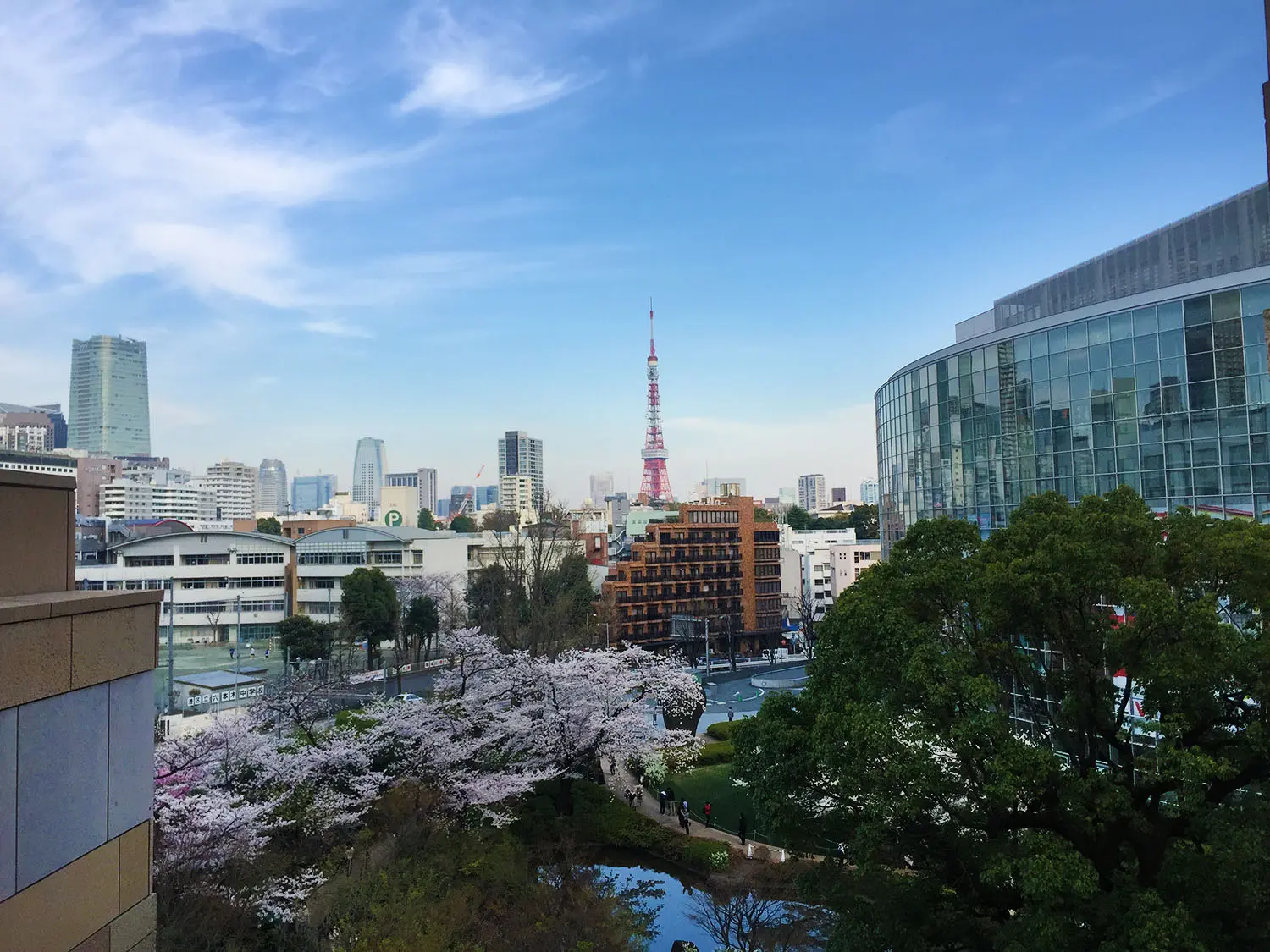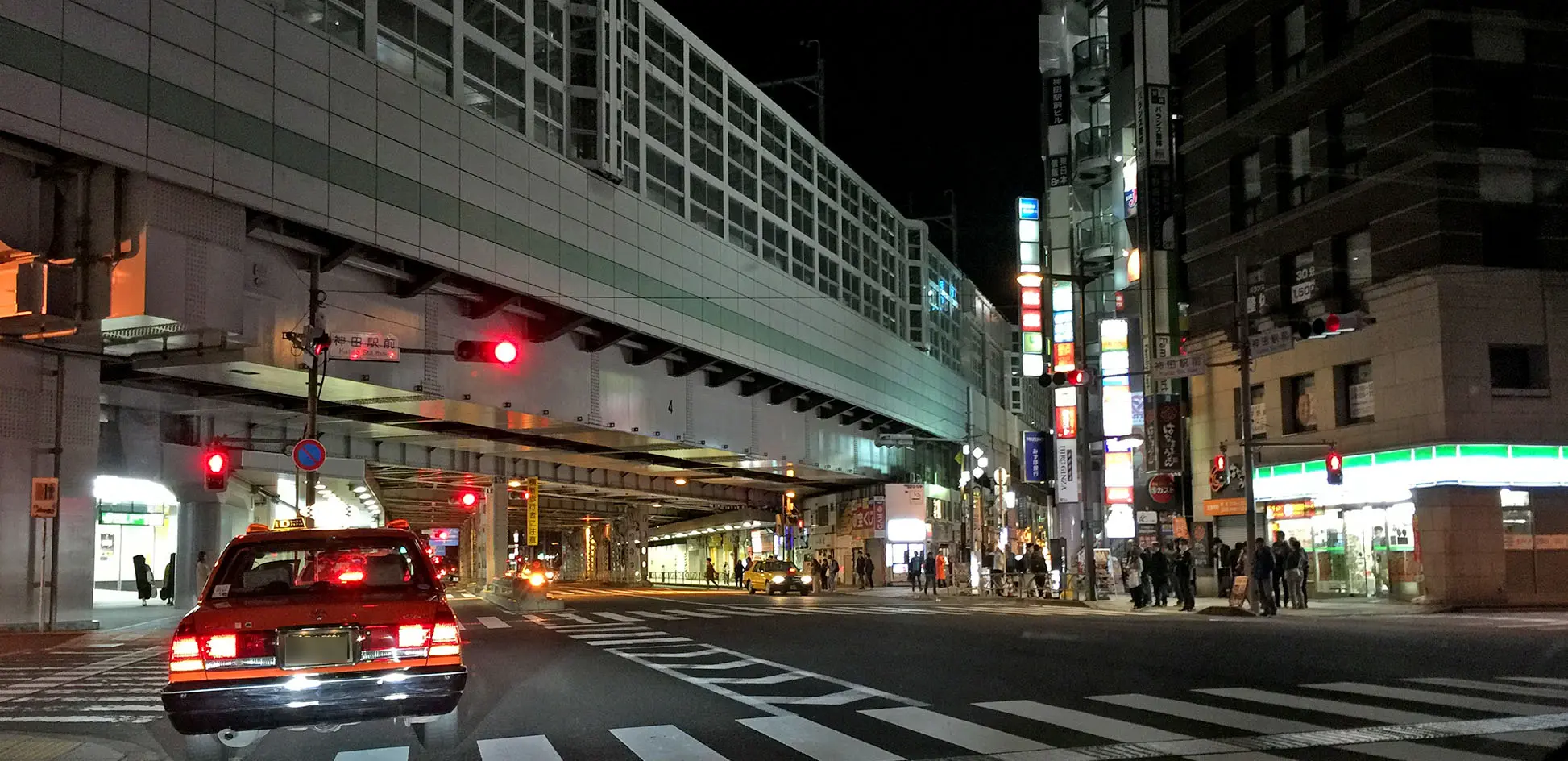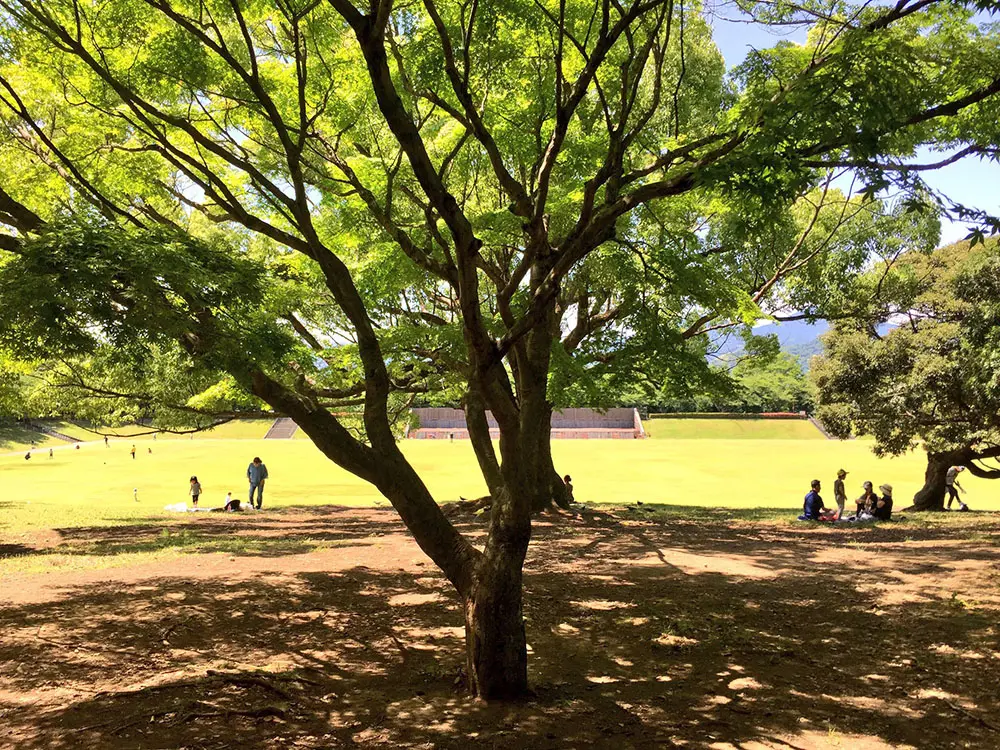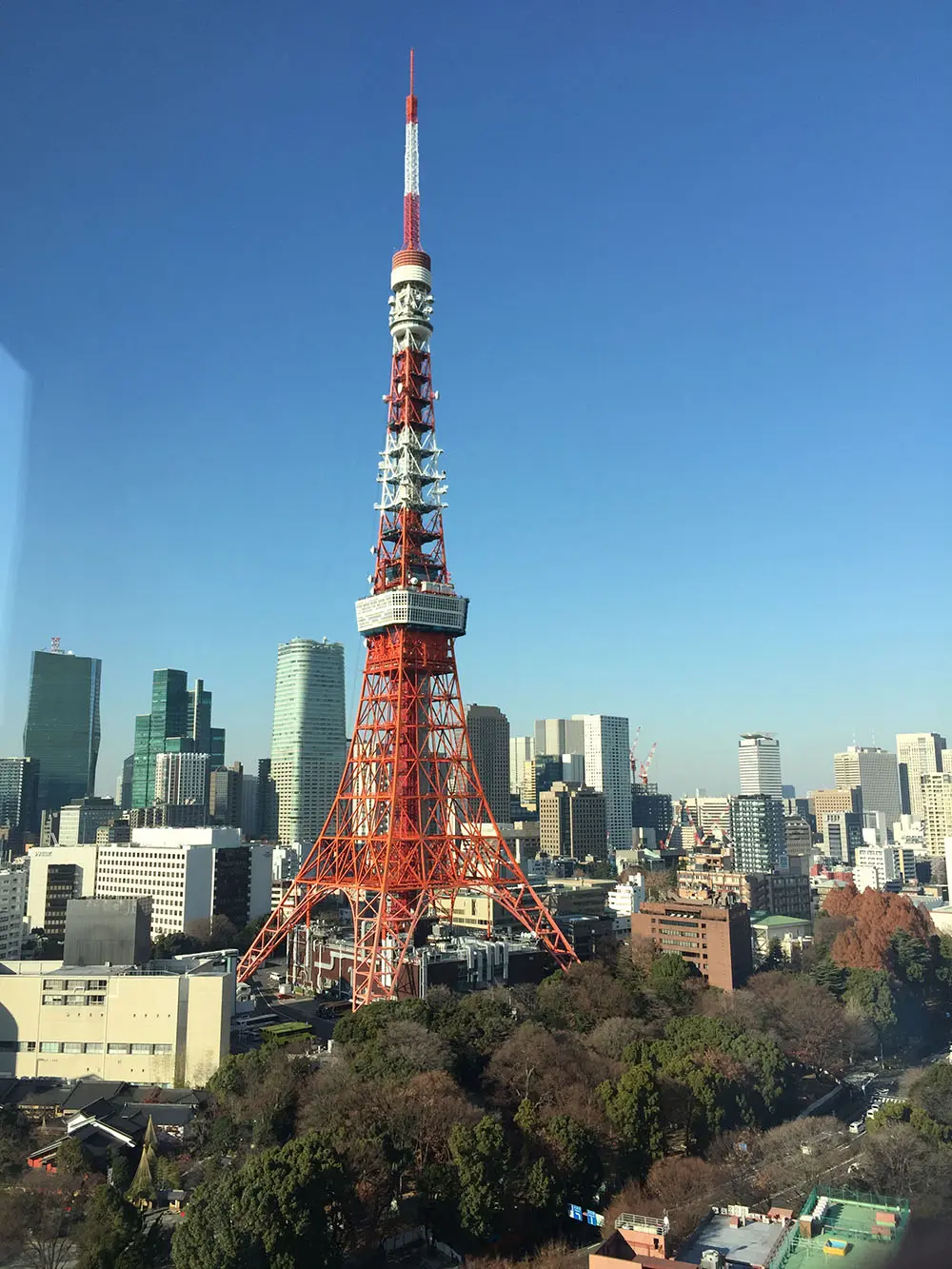Hello, this is Hashi!
As I mentioned at the beginning, I left Shizuoka City, where I had lived for 28 years, and moved to Tokyo just last month.
I’d like to write about what life is like in Tokyo compared to Shizuoka City, which has a population of less than 700,000 and is still not breathing.
1. Surprisingly comfortable life in Tokyo
“Like a certain blog on “Are You Still Wasting Time in Tokyo? I was under the impression that rural areas are comfortable and Tokyo is a war of attrition. So, I was quite nervous when I moved to Tokyo.
However, when I moved here, I found it to be much more comfortable than I expected, and not much different from when I was living in Shizuoka City. In fact, it’s all very convenient.
I moved to the Minato Ward area, which is near the center of the 23 wards, but there is a lot of greenery around and not many people unless you go to a tourist spot. Going to Shibuya or Shinjuku on holidays is crowded as hell and exhausting both physically and mentally, but spending time in Hiroo or Shirokane during the daytime on weekdays is as comfortable as in Shizuoka City.
2. You don’t need a train depending on where you live
If you search on the Internet for “if you want to live in Tokyo” or “moving to Tokyo”, you will read that you will die in a crowded train like hell, but in my case, I haven’t taken a train in over a month since I came to Tokyo.
But in my case, I haven’t taken a train in over a month.
From where I live in the Azabu area, it takes only a few minutes to walk to Roppongi. From Juban, for example, you can take the Toei bus to Shinagawa Station (bullet train) for 210 yen. If you take the Toei Bus or Chii Bus to Shinbashi, Meguro, or Shinjuku, it’s cheap and convenient. You can also take a cab to Shinagawa, Ebisu, Shibuya, or Ginza for 1,500-2,000 yen.
Ikebukuro may seem a bit far, but for normal living (shopping and eating), you can get everything done on foot. In fact, taking a cab in Shizuoka City is very comfortable since the distances in the city are so long that it can quickly cost over 2,000~3,000 yen, and the Shizutetsu bus service is not convenient. In other words, I found that if I decided on a base for my life and moved, I could live only on foot.
3. Living by car is difficult only for the wealthy or those who originally live in the city
In Shizuoka City, almost everyone has a car. Only a few towns, such as Gokomachi, Gofukumachi, and Nakamachi, like to take the bus or train to work. (Probably).
This means that many people drive to work. This means that many people drive to work, and the roads are very crowded in the morning and evening on weekdays. The Shizuoka Prefectural Museum of Art and the Sports Ground are the embodiment of the car-oriented society with over 400 free parking spaces, and there are infinite parking spaces (free, over 1,000 spaces) on the banks of the Abe River.
The Shizuoka Prefectural Museum of Art is always quiet and comfortable!
In Tokyo’s Minato Ward, monthly parking is 40,000 to 60,000 yen, and coin-operated parking is 600 to 1,200 yen per hour or more…. You need at least 480,000 yen to 720,000 yen per year to maintain your car. From there, you have to pay for car inspections, taxes, maintenance, etc.
In other words, people who live by car in Tokyo are either wealthy people who can afford to spend almost 1,000,000 yen a year, or people who originally have a parking lot (house or land).
4. Self-catering is more convenient than in rural areas
There are a lot of supermarkets, from the Depa Basement (Mitsukoshi, Isetan) to Kinokuniya where you can buy high quality foods, to mid-sized supermarkets like Meidi-ya, Maruetsu, Seijo Ishii, affordable local shopping streets, and even 100 yen vegetables like Bikkuri-ya. It is easy to get ingredients and seasonings that are difficult to get when you live in a rural area.
However, the vegetables from JA-affiliated stores and farmers’ markets in Shizuoka are far better. Vegetables produced and consumed on their own may be substandard in shape, but they are cheap, delicious and fresh. When shopping locally, I often meet old ladies who say, “I’m sending this to my daughter in Tokyo,” and my friends and I make fun of them as if they were UberMaman.
5. Are restaurants in Tokyo polarized?
I have been living in Tokyo for a while and have gone out to eat a bit. There are some good restaurants, but I have yet to find a good, cheap restaurant.
There seems to be a polarization between very expensive and good and very cheap and bad.
This is due to the fact that renting a place is much more expensive than in rural areas, which adds to the cost and limits the amount of money that can be spent on ingredients.
In other words, if you want to eat good food for 1,000 yen If you want to eat good food for 1,000 yen, you should move to Shizuoka City or Kochi Prefecture.
(The photo shows a restaurant in Shizuoka City that serves delicious food.
Also, I think the standard of deliciousness is different between rural areas and Tokyo. In the provinces, freshness is the most important factor, but in Tokyo, not only freshness, but also “cooking, preparation, and service” are evaluated.
In Shizuoka, for example, the freshness of sashimi and vegetables is the only thing that matters, and even if the food is not cooked well, it tastes good. One gourmand boy gave a scathing review, saying, “No matter which kind of sushi you eat in Shizuoka, the ingredients are always big and the temperature is always the same,” and I feel that this is the case in every region. On the contrary, I felt that at high-end restaurants in Tokyo, the food is judged to be “delicious” not because of the ingredients but because of the cooking, technique and high standard of service.
However, there are also good Chinese, Indian, and Thai restaurants in Tokyo at low prices (2-3 thousand yen for lunch).
6. Are people in Tokyo fashionable?
Yes, they are! But they are surprisingly segregated.
If you walk from Omotesando to Harajuku, you will see a lot of men and women walking around wearing modestly coordinated clothes that look like they are working in a small specialty store. In the Roppongi and Azabu areas, you’ll encounter a man wearing a stylish jacket every 100 meters, and in an hour’s walk, you’ll see two or three guys dressed so coolly that you’ll look back at them. On the other hand, when I go to Akihabara to buy home appliances, there are still an infinite number of guys in all-black outfits, or picture-perfect otaku in baggy check shirts.
In other words, the city (or place) was characterized by the lifestyle one wanted to lead.
7. Shibuya, Shinjuku and Ueno are dangerous
I have moved to Tokyo, but I try not to go there…. I’m sure there are many other places that are more dangerous.
First of all, there are too many kids in Shibuya. There are so many young people that it seems like 30% of Japan’s teenagers are packed in there. There are also thousands of men and women with colorful hair walking around. In Shizuoka City, you can walk down Gofukumachi Street and see only 10 to 20 young people (and their hair is black). It is mentally exhausting and there are only stores for young people.
If you walk from Omotesando to Aoyama or head to Ebisu, it gets a little better.
But Shibuya and Ebisu smell like a ditch! It’s true. It smells worse than the public toilets at train stations, and sometimes it smells like you’re exploring a sewage treatment facility.
This is because the Shibuya River was turned into a ditch by domestic wastewater from along the river, so it was decided to cover it up and use it as a sewage channel as it is.
Reference: Dobu River Miscellaneous http://dobungawa.blog92.fc2.com/blog-entry-3.html
Next is Shinjuku, which is dangerous. There are a lot of suspicious people walking around. And it’s full of Chinese tourists and other inbound tourists. Everyone has a Yodubashi Cameraman rice cooker and toilet seat. And there are a lot of people from the countryside (like me), so it’s overcrowded and tiring. Even in Tokyo, many people look pale and everyone is tired.
Ueno is also dangerous. There are a lot of mysterious Indians, and there are about 1,000 restaurants under the elevated railway tracks such as Ameyoko, all of which are cheap and have mysterious flavors (I’m not saying they’re bad) and many are first-time killers. If you try to make eye contact with the kebab man, he will try to extort you for a thousand yen. In the case of Nakamachi Dori, there are men and women facing each other on the street like the first generation of Pokémon, and the moment you make eye contact, a battle begins. If you lose, you get ripped off for over 100,000 yen. You have no choice but to walk past them like in Naples, clutching your bag to your stomach and looking at the ground.
8. Tokyo’s nightlife requires money.
In Shizuoka City, I thought to myself, “Okay! I’m going to have fun today! I have a budget of 5,000 yen to 10,000 yen. If you go to a bistro for dinner and then go to a bar late at night and drink whiskey, you can have a great time with 20,000 yen per person at most. If you spend 50,000 yen in one day, you will feel like Ieyasu himself.
Champagne, Dalmayrac, and Nuits-Saint-Georges will cost you well over 100,000 yen in Tokyo!
But when I walked into a small upstairs authentic bar in Minato-ku, the master asked me, “Isn’t it expensive?” when I ordered a random old bottle of whiskey. He asked me. This was the ninth death, and to my surprise, the whiskey was 30,000 yen per glass…. It’s not a cabaret club or a high class club, it’s a small bar.
If I drank a few glasses of whiskey from the back bar at random, I would lose my salary for the month in that day’s bill. Of course, there are many conscientious restaurants, and the bar was expensive because of the rare bottles, but if you want to eat good food and go to several bars in the Minato Ward area, you need to have at least 50,000 yen per person, or 100,000 to 200,000 yen in your wallet to drink with peace of mind.
In return, you can find RM Champagne other than Moët & Chandon in every store you enter.
Mysterious steel towers painted in red and white….
What I found out when I moved to Tokyo
What I found out…. Depending on the area you live in, there is a clear division of people. The Minato Ward Office has a beautiful staff member with long brown hair who looks like a celebrity working as a receptionist, the Azabu convenience store has Louis Roderaire, the supermarket has a gray-haired old man who speaks English fluently, there is a dusty Bentley dumped under the elevated railway in Takagicho, and a Rolls Royce Dawn There is a dusty Bentley abandoned under the elevated tracks in Takagicho, and a Rolls Royce Dawn parked on the street in Ebisu, next to which the young leaf markers of Hinomaru School of Motor Vehicles pass.



